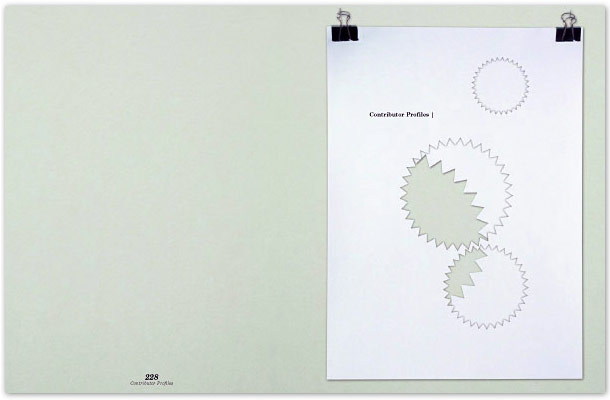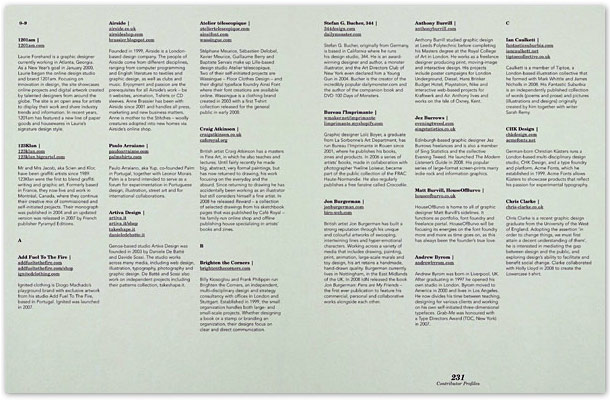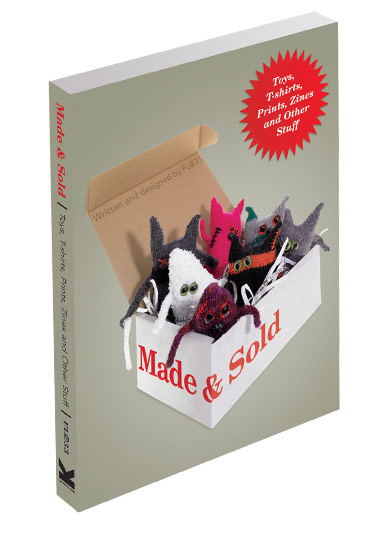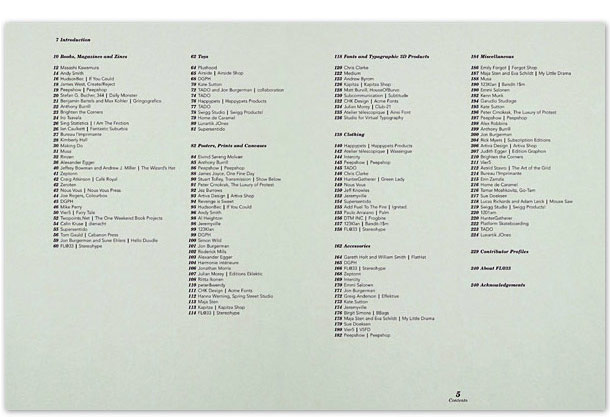
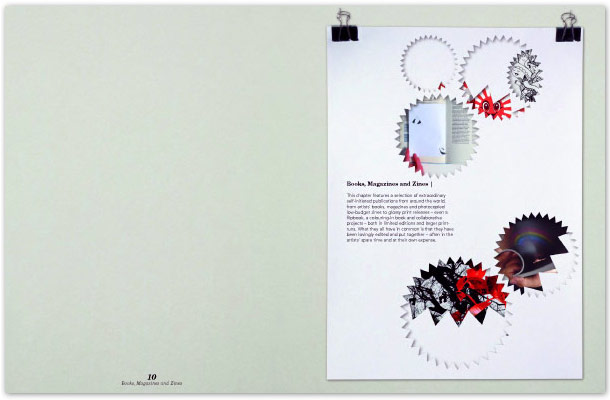
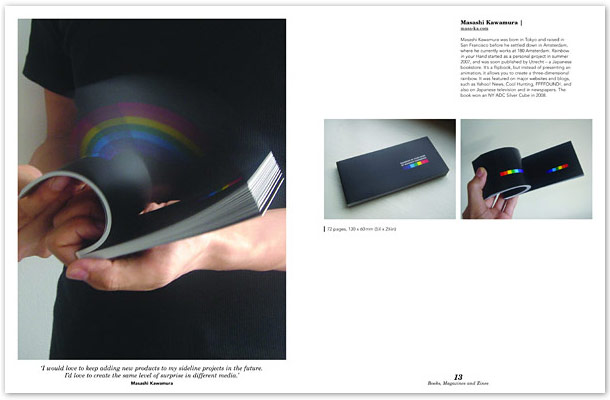
page 12 :
‘I would love to keep adding new products to my sideline projects in the future.
I’d love to create the same level of surprise in different media.’
Masashi Kawamura
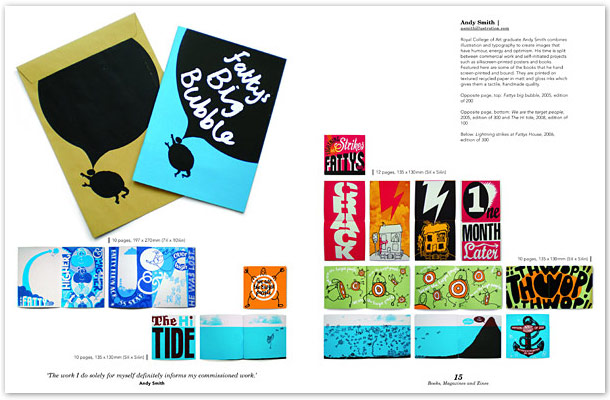
page 20:
‘I’ve always wanted my own products, so I could control every aspect of
the project from idea to illustration, writing, and design.
He who signs the cheques controls the type size.’
Stefan G. Bucher, 344 Design
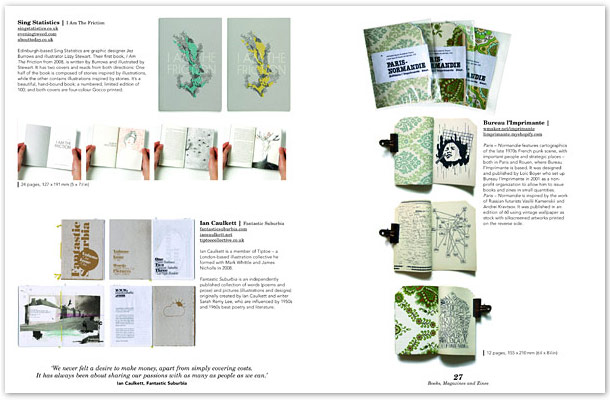
page 30:
‘Graphic design can be just a profession,
but for the truly successful it is often more than that.’
Making Do
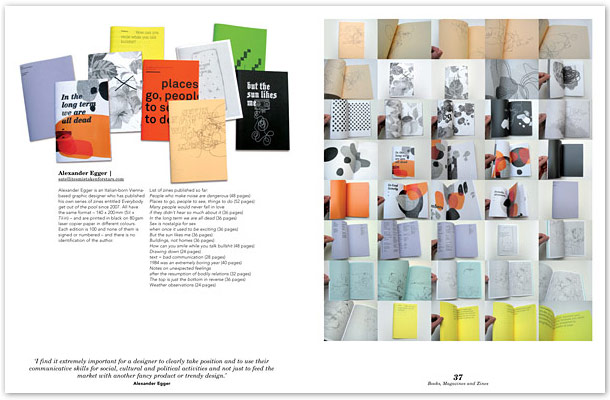
page 36:
‘I find it extremely important for a designer to clearly take position and
to use the communicative skills for social, cultural, political activities and not just
to feed the market with another fancy product or trendy design.’
Alexander Egger
page 50:
‘Most of the products we create are originally independent projects
and afterwards we decide if we want to commercialize them.’
Vier5
page 52:
‘It’s very refreshing and motivating if your way of
working and the things you do are diverse.’
Martin Lorenz, Twopoints.Net
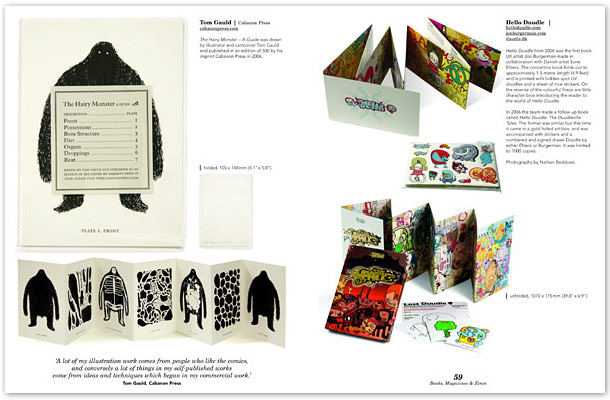
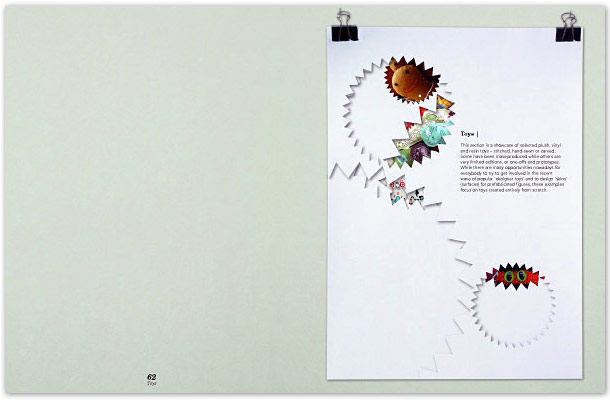
page 66:
‘Sometimes our clients laugh at the Stitches, although we would prefer them
to laugh with the Stitches as some of them are quite
fragile emotionally. The Stitches, that is…’
Anne Brassier, Airside
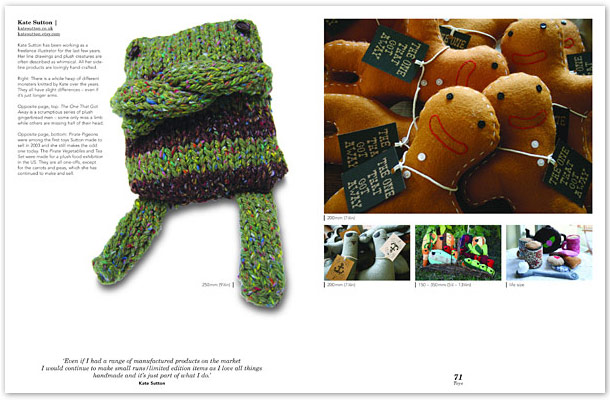
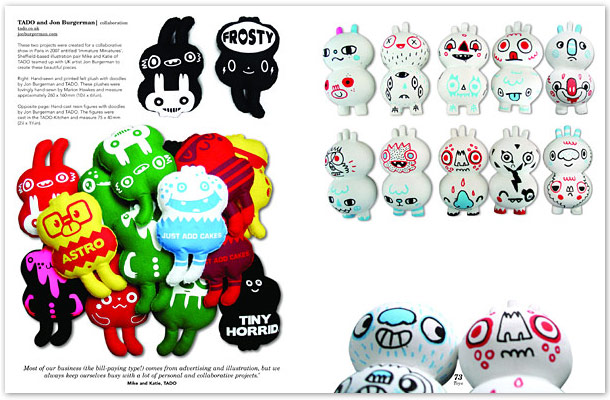
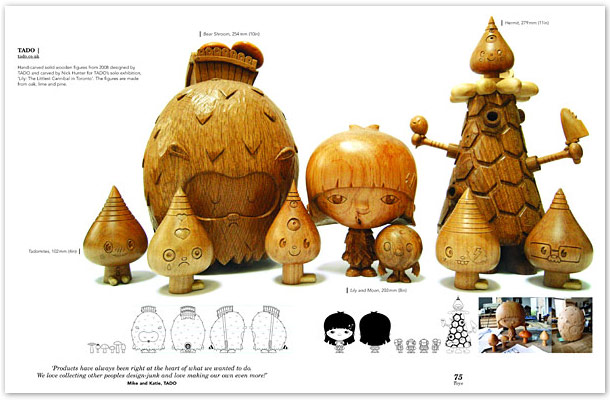
page 76:
‘As designers we aim to obscure the borders between traditional design practice
and other fields, exploring different non-virtual media, creating and
producing our own content such as clothes, toys, music, posters, editions
and multi-use and multi-content objects.’
Patch, Happypets
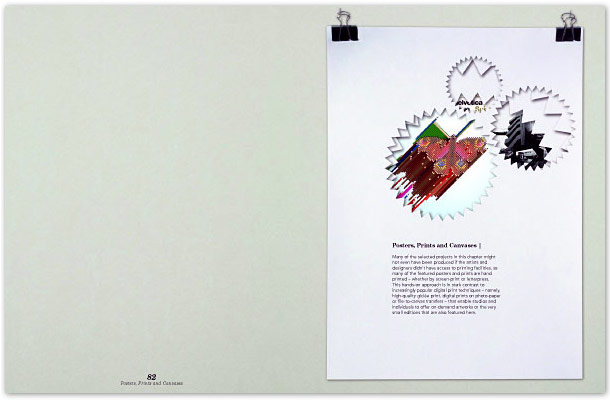
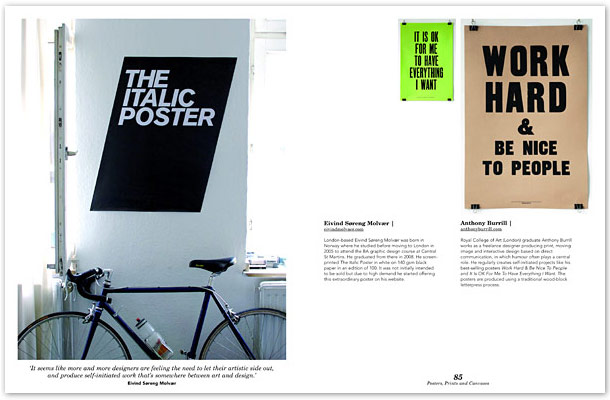
page 84:
‘It seems like more and more designers are feeling the need to let their
artistic side out, and produce self-initiated work that’s
somewhere between art and design.’
Eivind Søreng Molvær
page 86:
‘We’ve always seen our products as a means of self-promotion rather than
as a way of making money. We’ve actually been commissioned lots of times
for commercial work after people seeing our products and books.’
Miles Donovan, Peepshow
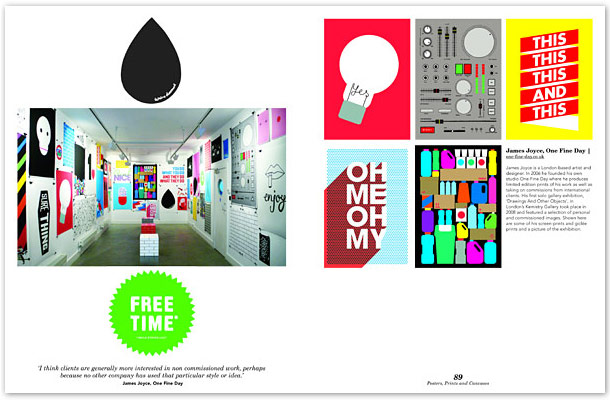
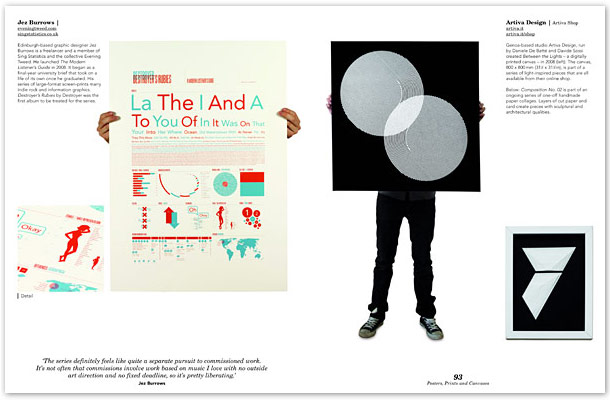
page 100:
‘If, as a designer, you can turn your hand to a variety of disciplines then
you are more likely to find work. I believe this approach has opened up the
breeding ground of designers’ sidelines so that they can successfully
showcase their skills within a broader market.’
Simon Wild
page 102:
‘I think that the trend towards more self-initiated work and making
products is really significant within the profession. The fact that
websites are featuring shops to sell products enables the
graphic designer to connect with an audience.’
Roderick Mills
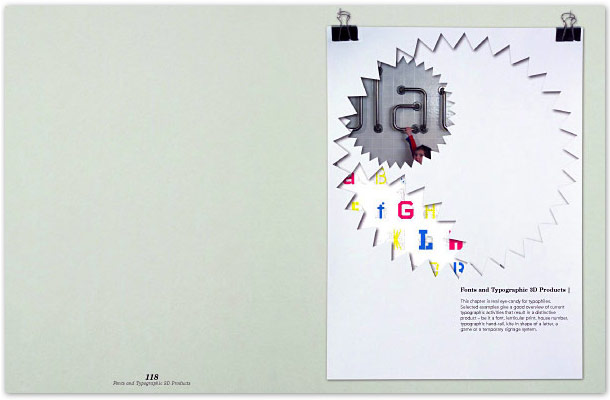
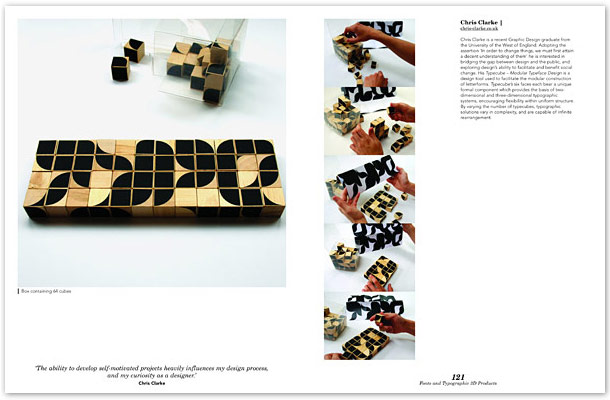
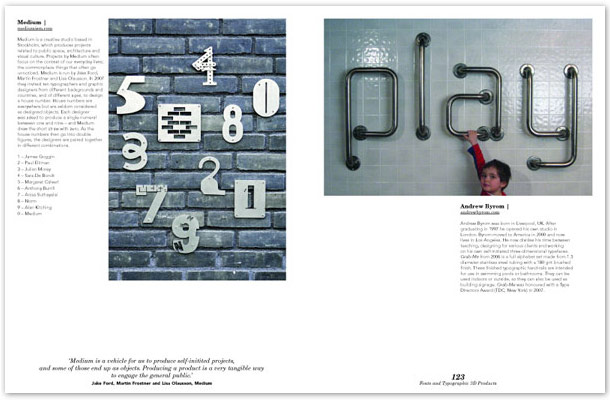
page 136:
‘Visionary ideas, from Da Vinci’s notion of a helicopter to Edison’s lightbulb,
were hardly ever the result of a commission. Inventions and
innovations occur freely and independent from pragmatic constraints.
Their use and commercial exploitation may or may not happen at a later stage.’
Matthias Hillner, Studio for Virtual Typography
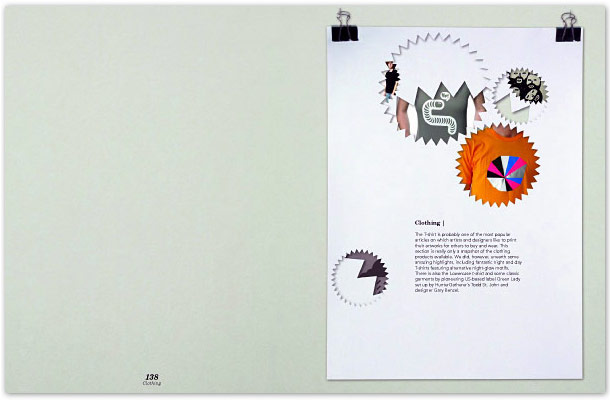
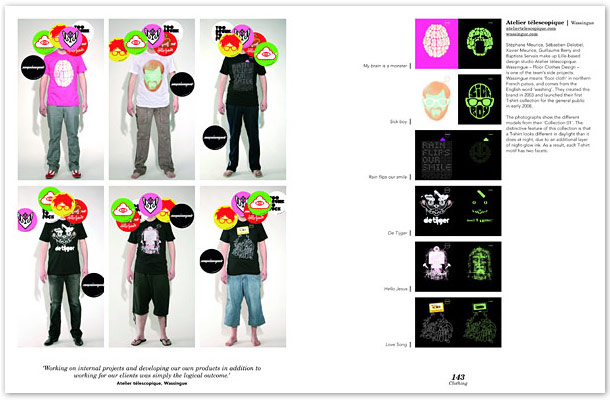
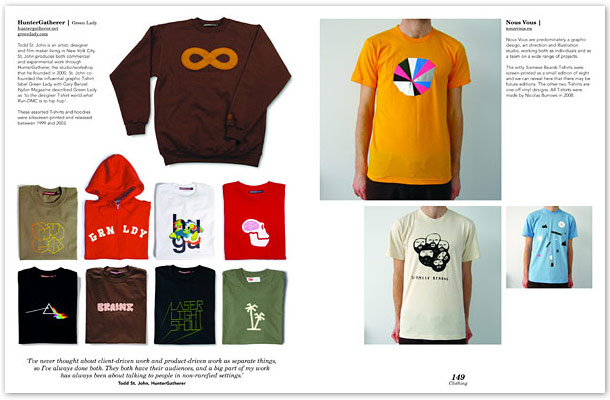
page 148:
‘I’ve never thought about client-driven work and product-driven work as
separate things, so I’ve always done both. They both have their audiences,
and a big part of my work has always been about talking to people
in non-rarefied settings.’
Todd St. John, HunterGatherer
page 154:
‘It’s such a great feeling to see somebody wearing your design!’
Supersentido
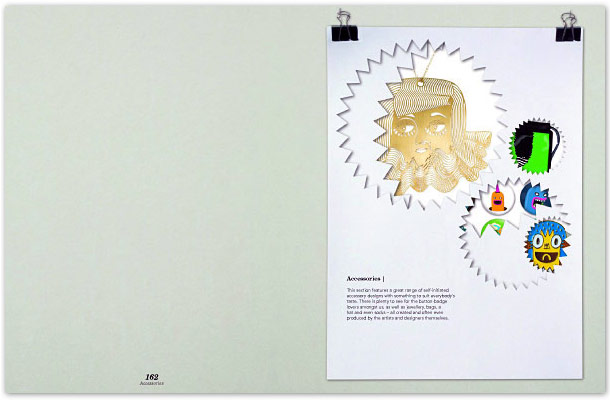
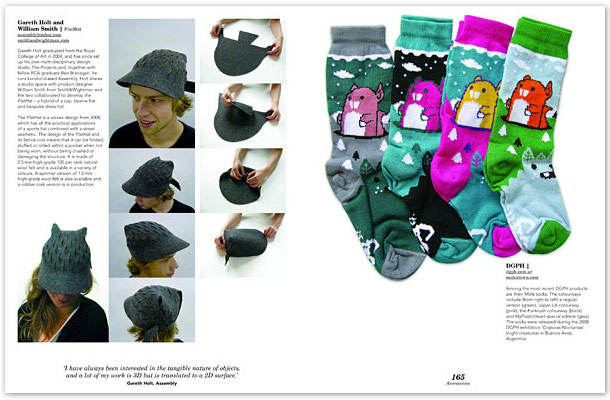
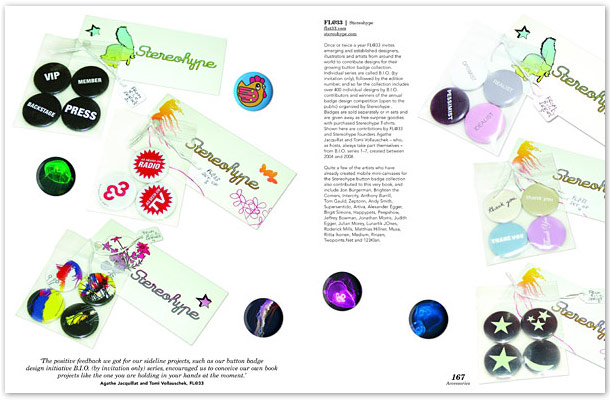
page 170:
‘I suppose as a graphic designer I am commissioned to convey someone else’s
message, by profession. And sometimes I’ve just got things to say myself.’
Emmi Salonen, Emmi
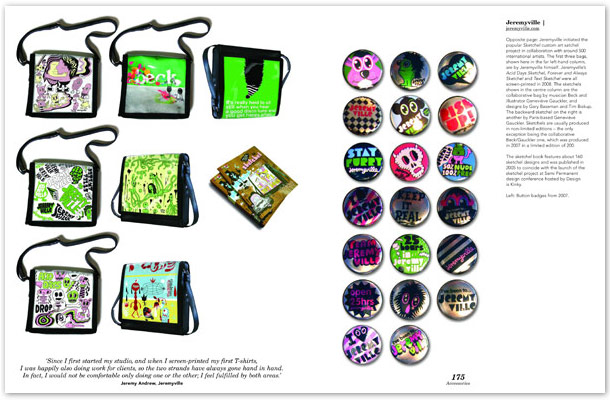
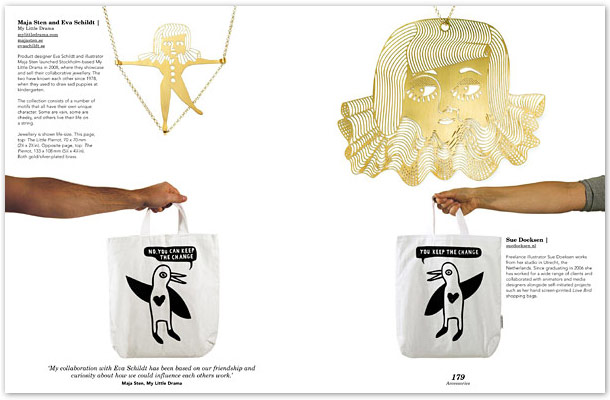
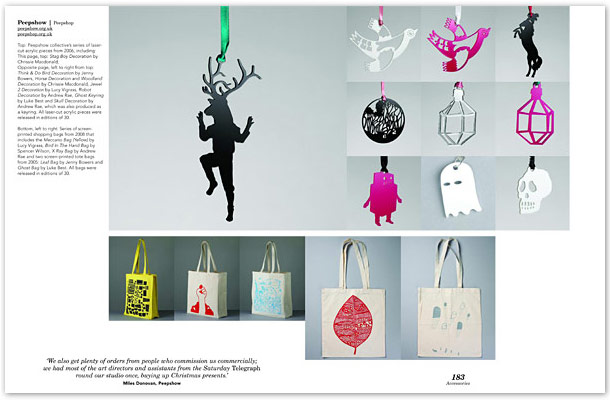
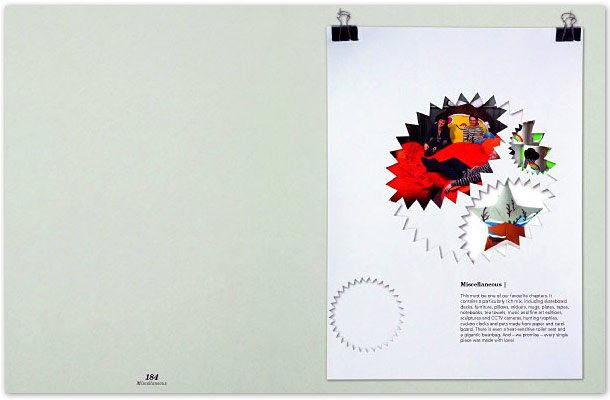
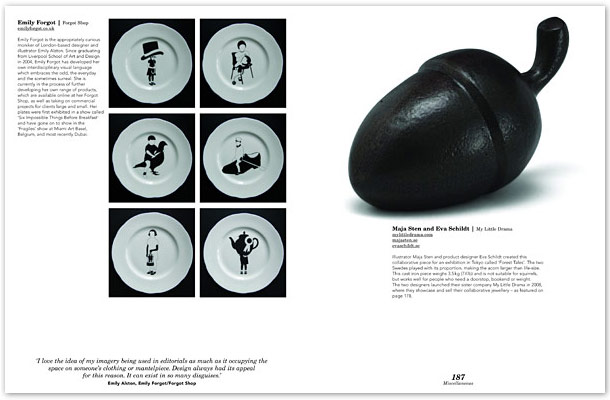
page 190:
‘I think we release our own products because of our graffiti background –
we just can’t stop writing our names everywhere on everything.
The cool side of goodies is though that you get money back from your hard work.’
Scien and Klor, 123Klan
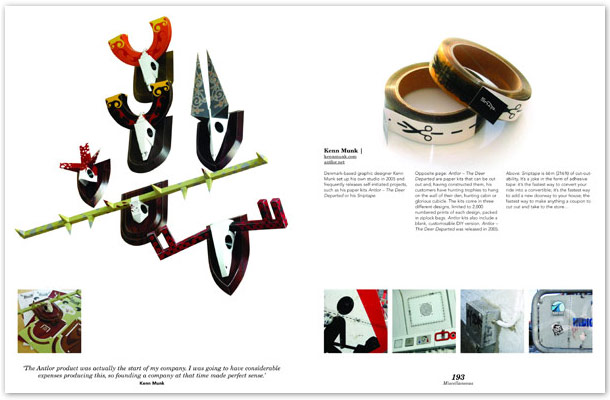
page 196:
‘Self-initiated work shows the world what can be achieved when economics and
restraint are thrown out the window – when the designer is simply
left to go-to-it. When all that’s left is pure motivation,
the results can be startlingly poignant.’
Peter Crnokrak, The Luxury of Protest
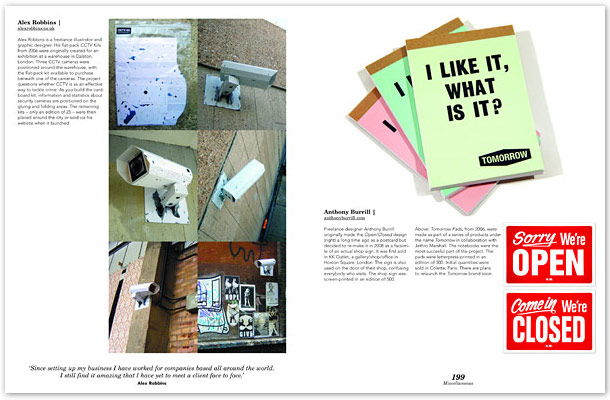
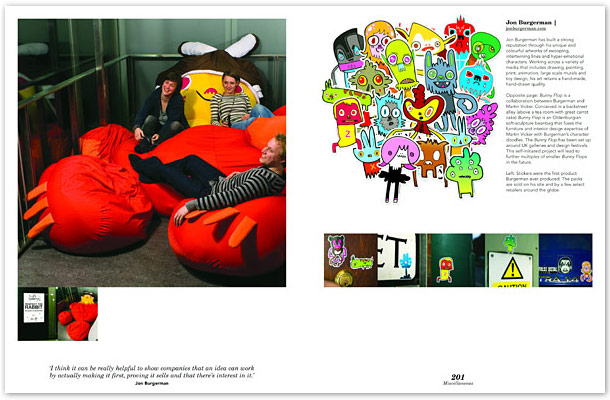
page 200:
‘I think it can be really helpful to show companies that an idea can work
by actually making it first, proving it sells and there’s interest in it.’
Jon Burgerman
page 206:
‘I like to be able to distribute ideas and stories in bigger quantities than
having just one original piece of artwork. I also enjoy collaborating with
and featuring fellow artists who I admire for what they do.
It is a wonderful way of getting to know them.’
Judith Egger, Edition Graphon
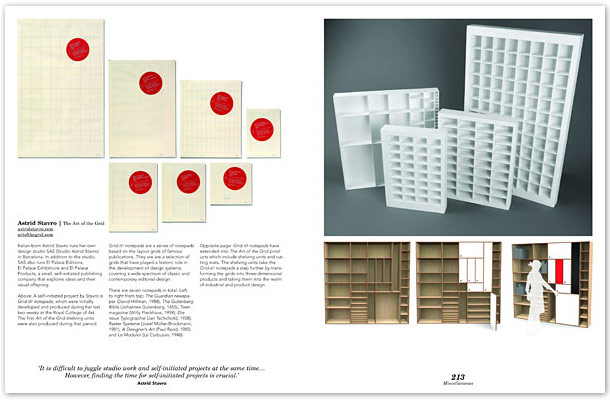
page 212:
‘It is difficult to juggle studio work and self-initiated projects at the same time…
However, finding the time for self-initiated projects is crucial.’
Astrid Stavro
